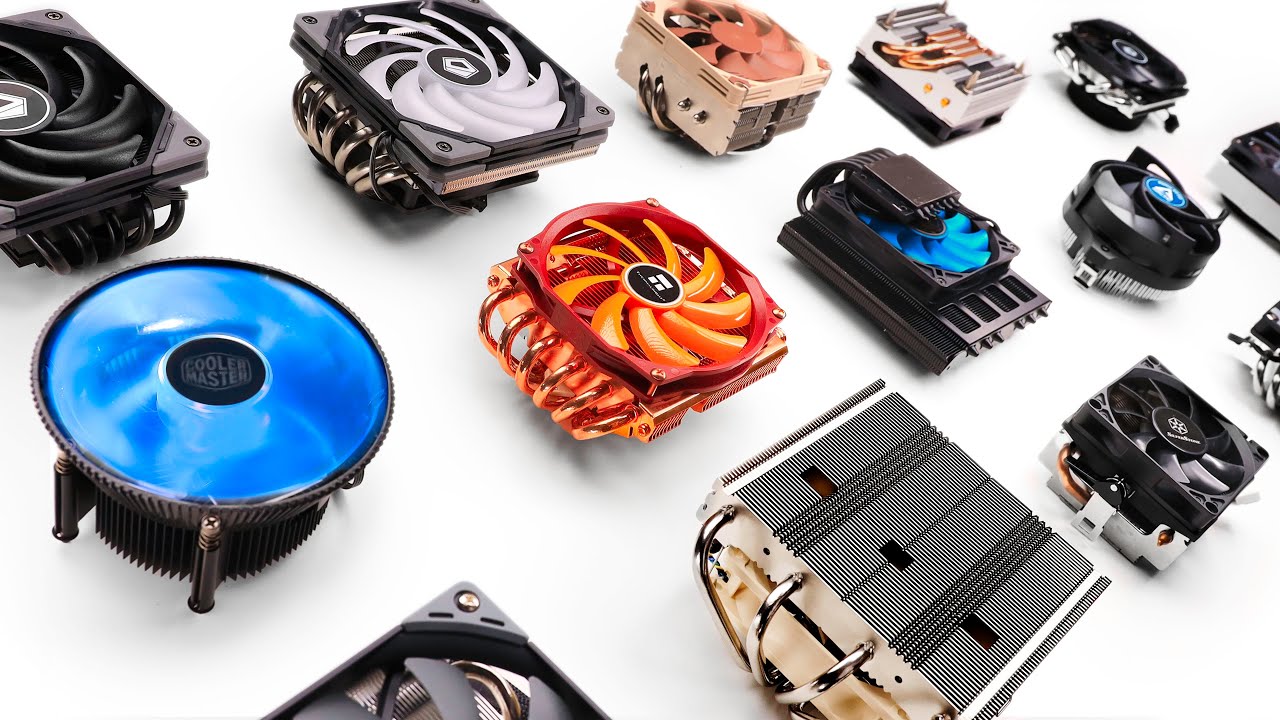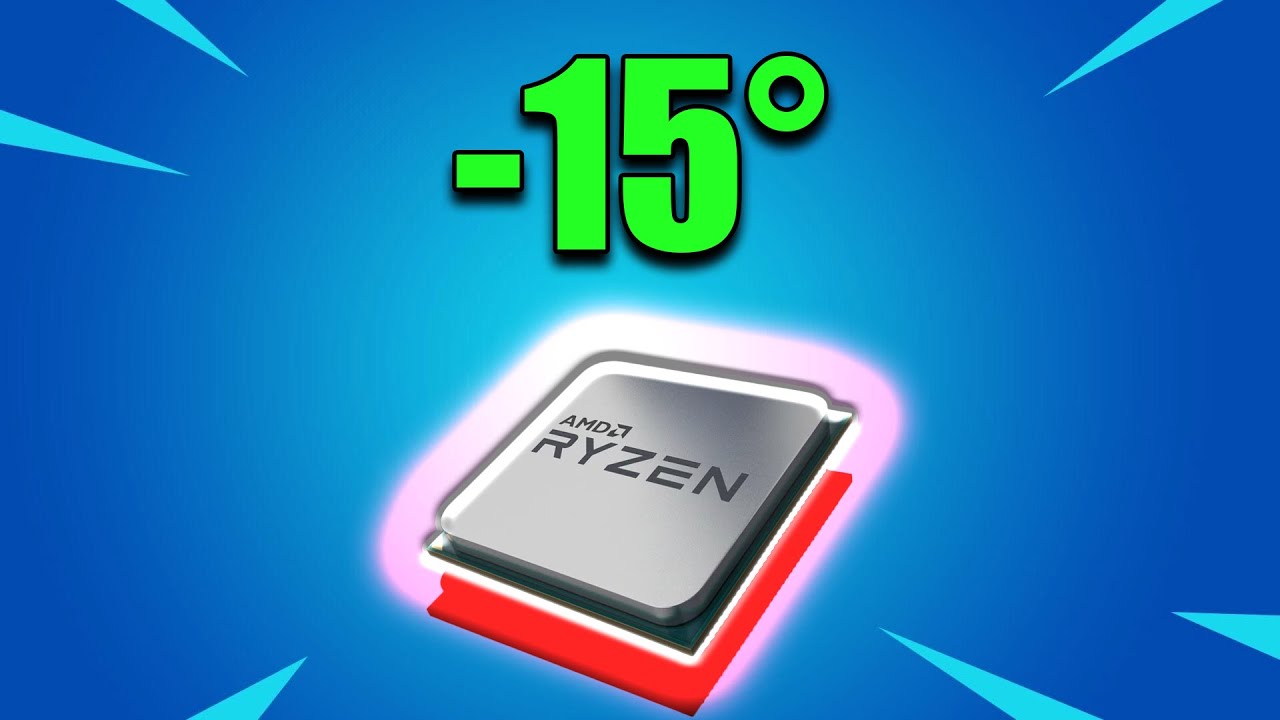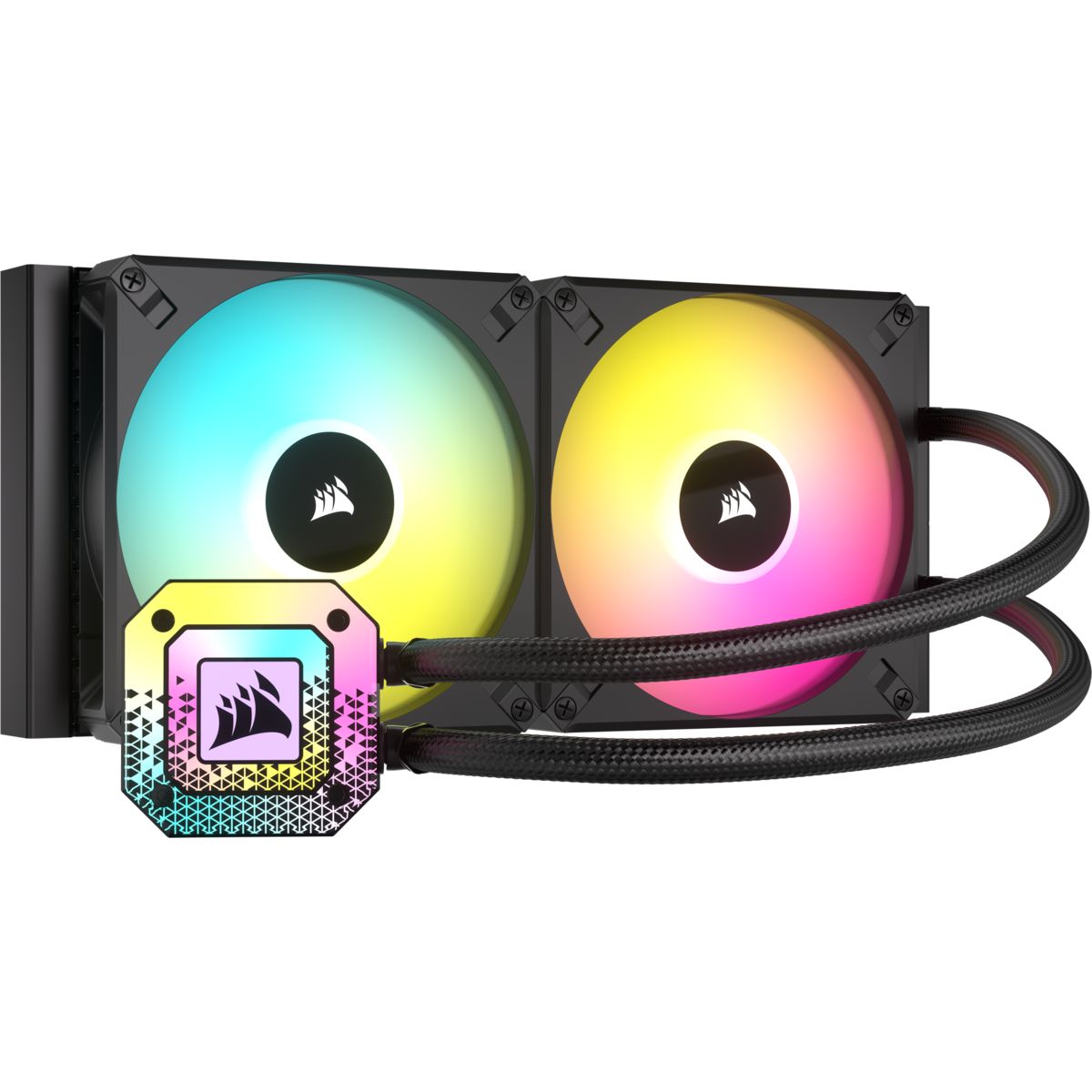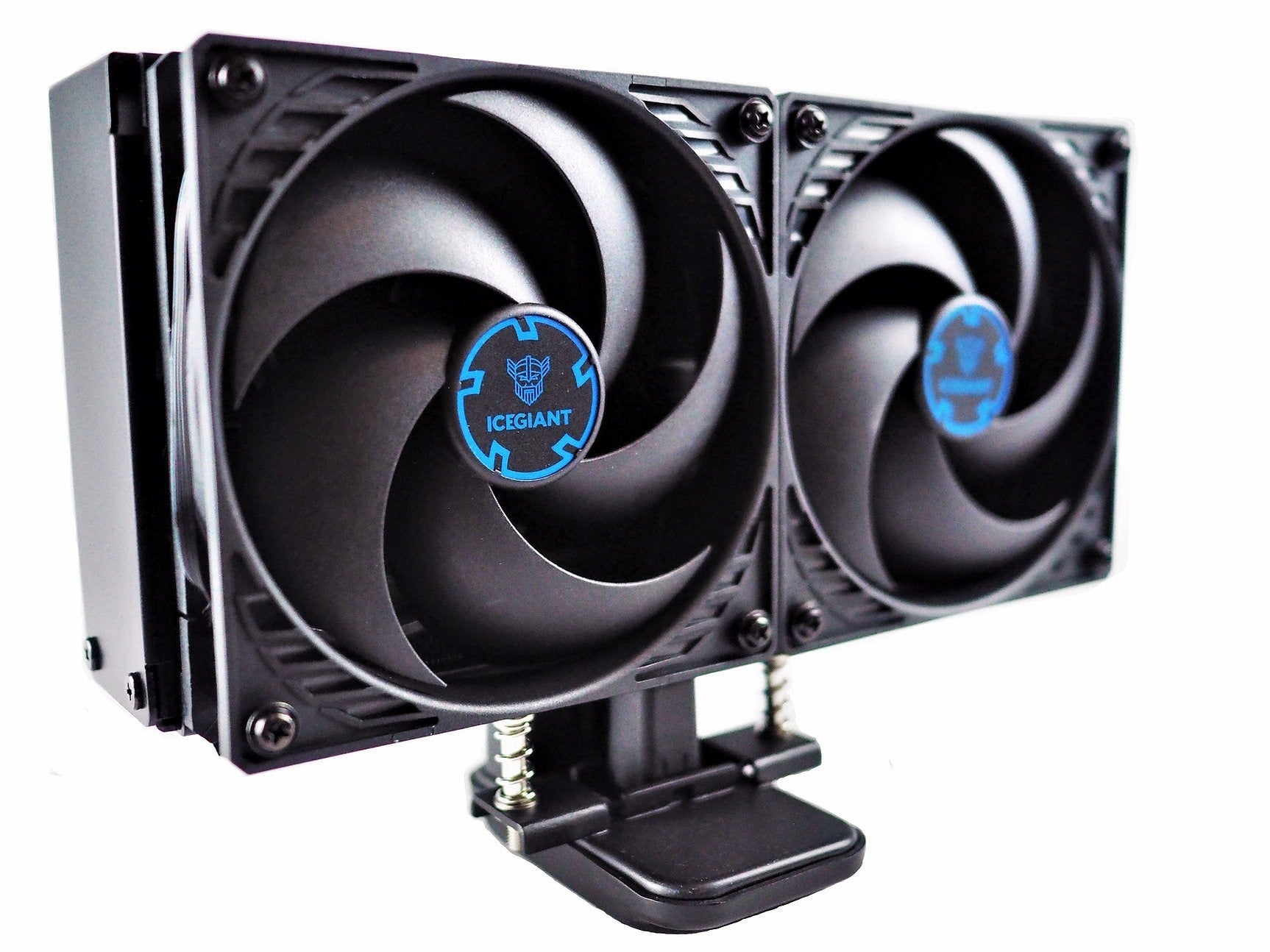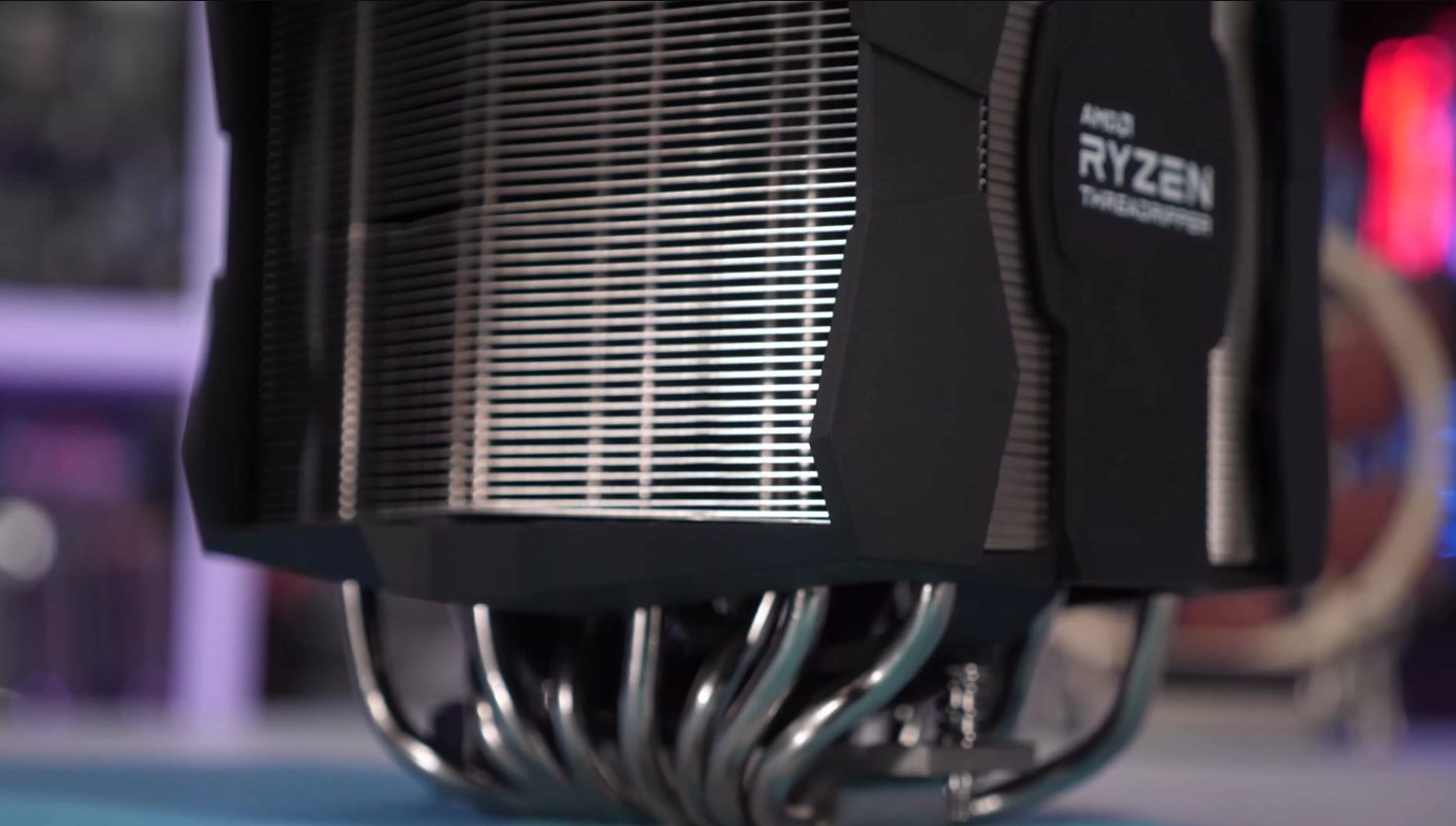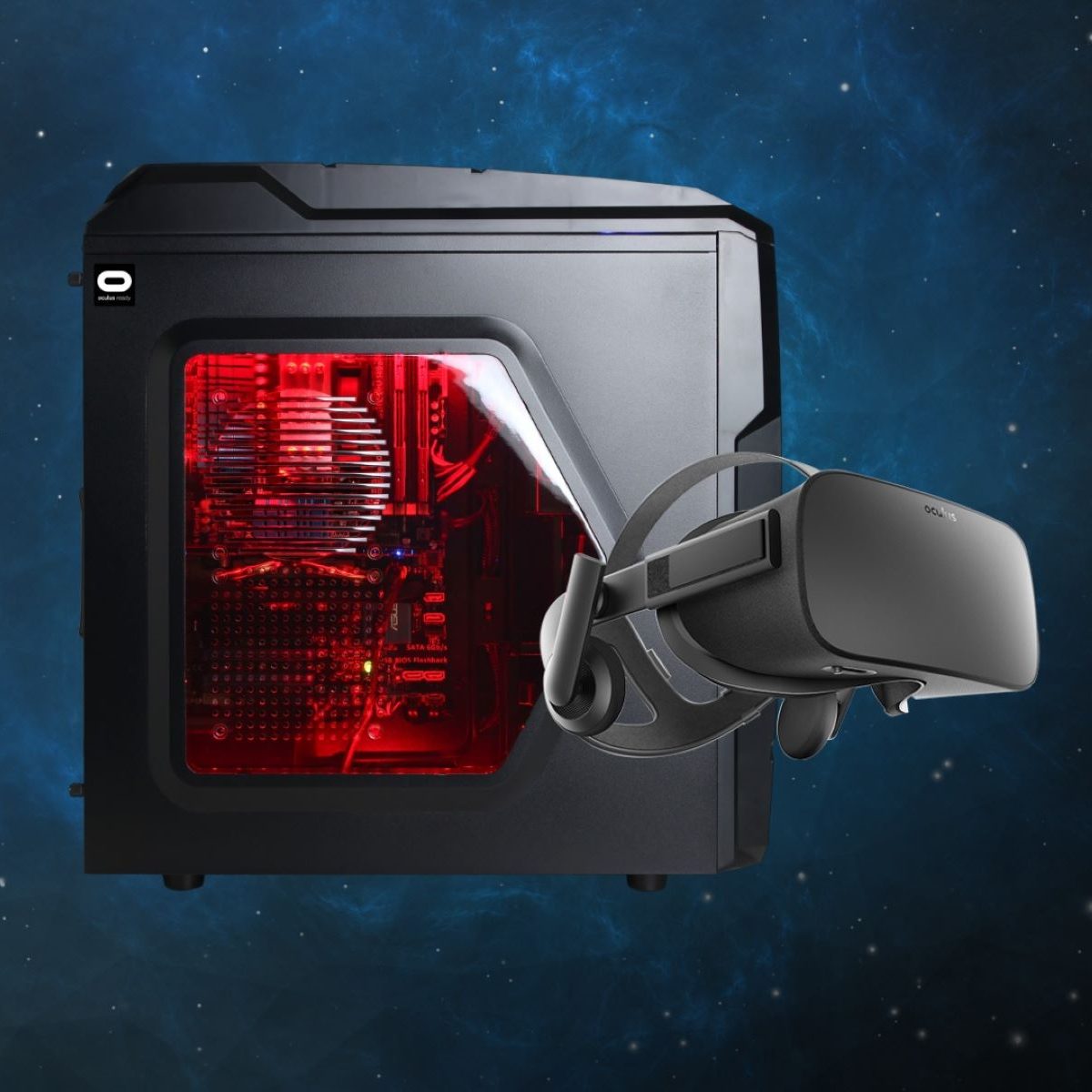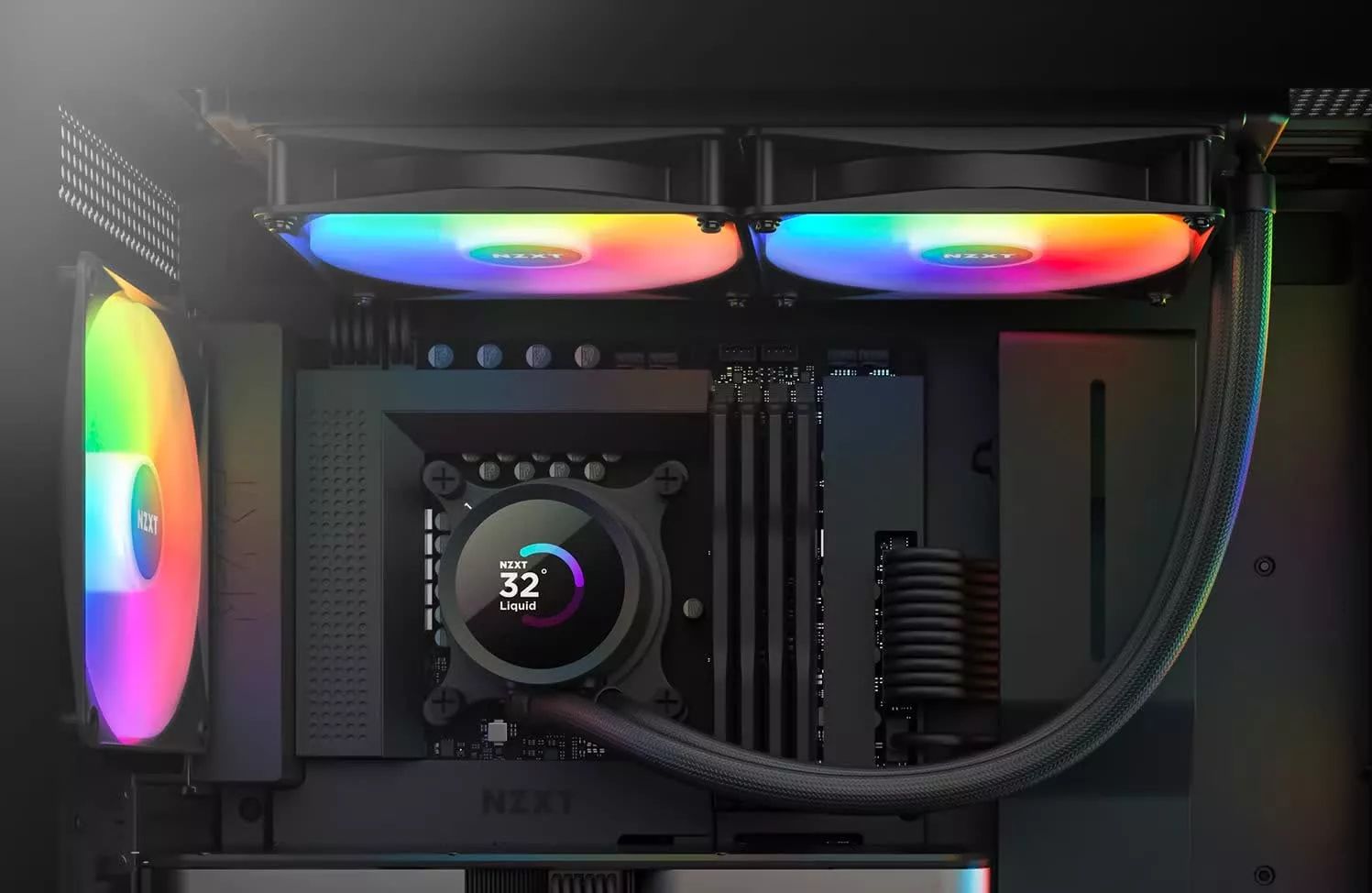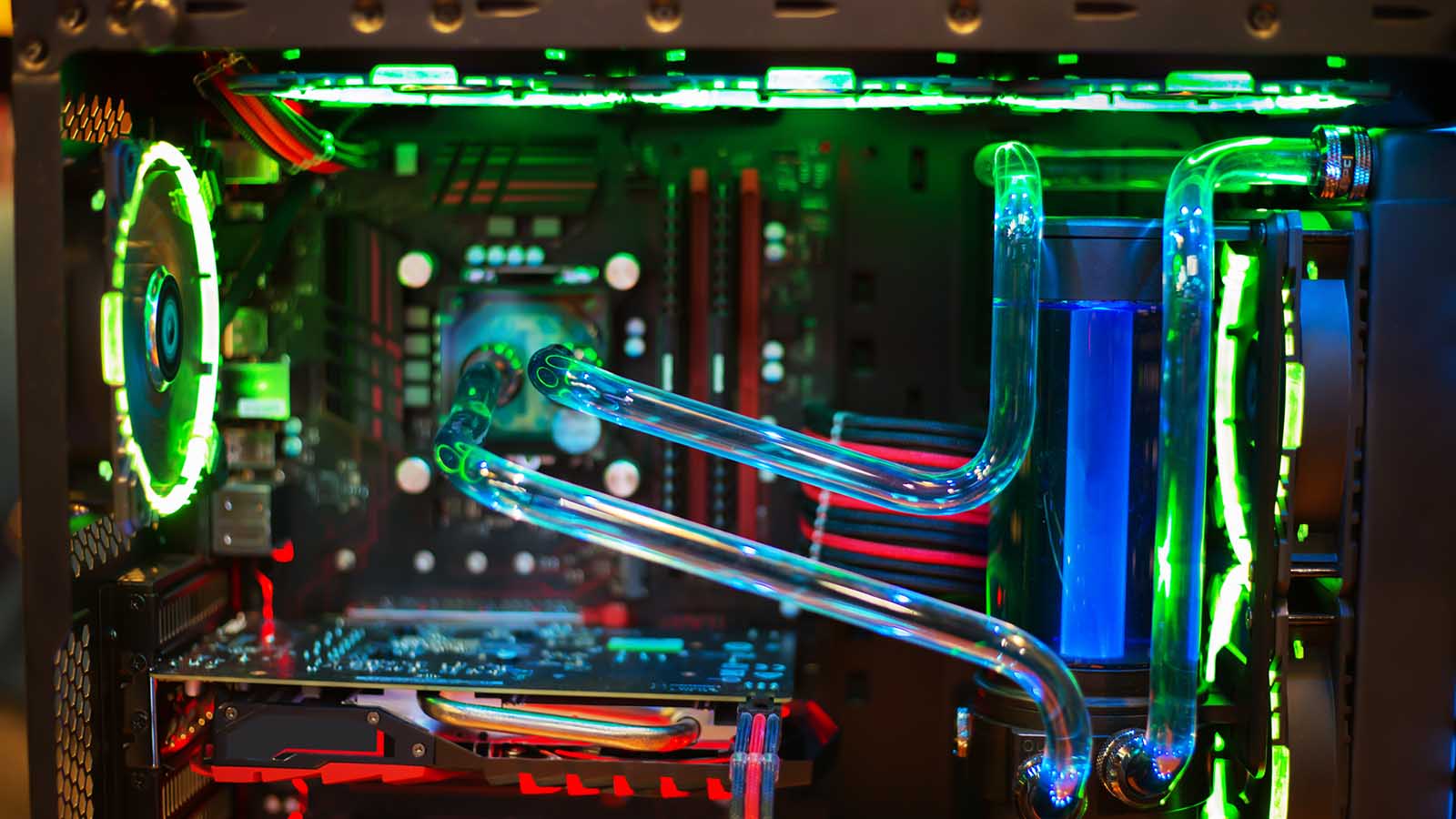Introduction
A CPU cooler app is a software application designed to help optimize the performance and temperature of a CPU (Central Processing Unit) on Android devices. As smartphones and tablets become more powerful, they generate more heat, which can negatively impact their performance and longevity. This is where a CPU cooler app comes in handy.
With the ability to monitor the CPU temperature, control CPU frequency, clear cache, close background apps, and optimize system settings, these apps offer a comprehensive solution to prevent overheating and improve performance. They provide real-time monitoring and notifications to keep users informed about the CPU temperature and take necessary actions to ensure the device performs optimally.
By utilizing advanced algorithms and optimization techniques, CPU cooler apps leverage the full potential of the Android operating system to keep the CPU temperature in check without compromising on performance. They offer a user-friendly interface, making it easy for users to navigate the app and access the necessary tools to manage their device’s temperature efficiently.
In this article, we will explore how a CPU cooler app works on Android devices. We will delve into the various functions it performs, such as monitoring CPU temperature, controlling CPU frequency, clearing cache, closing background apps, optimizing system settings, and providing real-time monitoring and notifications.
Are you tired of your Android device slowing down due to high CPU temperatures? Want to learn how to keep your device cool and optimize its performance? Read on to discover the inner workings of a CPU cooler app and how it can help you maintain a cool and efficient device.
What is a CPU Cooler App?
A CPU cooler app is a software application specifically designed for Android devices to manage and regulate the temperature of the CPU (Central Processing Unit). The CPU is the brain of the device, responsible for executing instructions and performing calculations. As the CPU works harder, it generates heat, and excessive heat can lead to performance issues and even damage the device.
A CPU cooler app serves as a solution to prevent overheating and improve the overall performance of the Android device. It offers a range of features and functionalities that help optimize the CPU’s temperature and ensure efficient operation.
One of the primary functions of a CPU cooler app is to monitor the CPU temperature in real-time. It keeps a constant check on the temperature and provides users with accurate readings. By monitoring the temperature, users can stay informed about the CPU’s current state and take necessary actions to prevent overheating.
In addition to monitoring, a CPU cooler app also allows users to control the CPU frequency. The frequency of the CPU refers to the speed at which it operates, and adjusting it can have an impact on both performance and temperature. By reducing the CPU frequency, the app can help lower the temperature, especially during intensive tasks or gaming sessions.
Another essential feature of a CPU cooler app is its ability to clear cache and close background apps. Cache files and running background apps consume system resources, including CPU power, leading to increased heat generation. The app identifies unnecessary cache files and background apps and clears them to free up resources and reduce the CPU’s workload.
Moreover, a CPU cooler app helps optimize system settings for better temperature management. It provides recommendations and suggestions on adjusting various settings, such as screen brightness, Wi-Fi and Bluetooth usage, and disabling unnecessary features, to minimize heat generation and improve efficiency.
Overall, a CPU cooler app is an essential tool for Android users who want to keep their devices cool, reduce the risk of performance issues, and enhance the lifespan of their devices. It offers an array of features to monitor and manage CPU temperature, control CPU frequency, clear cache, close background apps, and optimize system settings. By incorporating these functionalities, CPU cooler apps provide an effective solution to maintain optimal performance and prevent overheating on Android devices.
How Does a CPU Cooler App Work?
A CPU cooler app utilizes various techniques and functionalities to regulate and optimize the temperature of the CPU on Android devices. By employing advanced algorithms and optimization strategies, these apps offer effective solutions to prevent overheating and improve overall device performance.
One of the primary ways a CPU cooler app works is by monitoring the CPU temperature in real-time. It constantly checks the temperature sensors of the device and provides users with accurate temperature readings. This information allows users to stay informed about the CPU’s temperature and take immediate action if it becomes too hot.
In addition to monitoring, a CPU cooler app can control the CPU frequency. By adjusting the CPU frequency, the app regulates the speed at which the CPU operates. When the device is performing demanding tasks or running intensive applications, the app can lower the CPU frequency to reduce heat generation. On the other hand, during lighter tasks or regular usage, it can increase the CPU frequency to enhance performance.
Another critical aspect of how a CPU cooler app works is by clearing cache and closing background apps. Cache files and running background apps consume system resources, including CPU power, which leads to increased heat generation. The app identifies unnecessary cache files and closes background apps that are not in use, freeing up valuable resources and reducing the workload on the CPU.
A CPU cooler app also helps optimize system settings to manage temperature effectively. It provides users with recommendations and suggestions on adjusting various settings that can impact heat generation and device performance. This may include lowering screen brightness, disabling unnecessary features and animations, or managing Wi-Fi and Bluetooth usage. By optimizing these settings, the CPU cooler app minimizes the workload on the CPU and helps maintain a cooler device.
Furthermore, a CPU cooler app provides real-time monitoring and notifications. Users can set temperature thresholds, and the app will notify them when the CPU temperature reaches a critical point. This allows users to take immediate action, such as closing resource-intensive apps or enabling additional cooling methods, to prevent damage to the device.
Overall, a CPU cooler app combines various techniques, such as real-time monitoring, CPU frequency control, cache clearing, background app closure, and system settings optimization, to regulate the CPU temperature on Android devices. By implementing these functionalities, the app ensures optimal performance, prevents overheating, and contributes to an extended lifespan for the device.
Monitoring CPU Temperature
One of the fundamental functions of a CPU cooler app is to monitor the CPU temperature in real-time. By constantly checking the temperature sensors of the device, the app provides users with accurate temperature readings, allowing them to stay informed about the CPU’s current state.
The CPU cooler app displays the temperature on a user-friendly interface, often in the form of a temperature gauge or numerical value. This visual representation helps users easily understand the CPU’s temperature levels and identify any potential issues. Additionally, users can set temperature thresholds and receive notifications when the CPU reaches critical temperatures.
Monitoring the CPU temperature is crucial because excessive heat can lead to performance degradation and even damage the device. By keeping an eye on the temperature, users can take necessary actions to prevent overheating. They can close resource-intensive apps, adjust system settings, or even use additional cooling methods, such as a cooling pad or fan, if needed.
Furthermore, CPU cooler apps provide comprehensive temperature logs and historical data. Users can view past temperature trends and identify patterns that may contribute to overheating. This helps them gain insights into the factors that affect CPU temperature and make informed decisions to optimize their device’s performance.
Overall, with real-time temperature monitoring, notifications, and historical data, CPU cooler apps empower users to proactively manage CPU temperature. By staying vigilant and taking preventive measures, users can ensure that their device operates within the optimal temperature range, providing smoother performance and a longer lifespan.
Controlling CPU Frequency
A significant feature of a CPU cooler app is its ability to control the CPU frequency on Android devices. CPU frequency refers to the speed at which the CPU operates, and it directly impacts both performance and temperature.
By adjusting the CPU frequency, the CPU cooler app can effectively manage the CPU’s workload and heat generation. During intensive tasks or resource-demanding applications, the app can lower the CPU frequency to reduce heat production and prevent overheating. This helps maintain stable performance without compromising the device’s temperature.
Conversely, when the device is performing lighter tasks or the CPU’s full power is needed, the CPU cooler app can increase the CPU frequency. This ensures smoother multitasking, responsiveness, and improved performance for applications that require more computational power.
The CPU cooler app usually offers different modes or profiles, allowing users to choose between performance and power-saving options. This flexibility enables users to customize their device’s behavior according to their specific needs and preferences. For example, they can select a “gaming mode” to boost CPU frequency during gaming sessions, ensuring optimal performance, or choose a “power-saving mode” to reduce CPU frequency during regular usage, conserving energy and minimizing heat generation.
Moreover, some advanced CPU cooler apps may include dynamic frequency scaling. This feature enables the app to automatically adjust the CPU frequency based on the workload and temperature conditions. For instance, if the CPU temperature rises above a certain threshold, the app may lower the CPU frequency to mitigate heat production. Once the temperature decreases, the app can increase the CPU frequency again to provide better performance.
Overall, the ability of CPU cooler apps to control CPU frequency provides users with a powerful tool to balance performance and temperature. By intelligently adjusting the CPU’s operating speed, these apps help prevent overheating, ensure optimal performance, and customize the device’s behavior to suit individual needs and preferences.
Clearing Cache and Closing Background Apps
A CPU cooler app offers a valuable function that involves clearing cache files and closing unnecessary background apps on Android devices. These tasks help optimize system resources, including CPU power, and reduce heat generation.
Cache files are temporary data stored by applications to speed up their performance. However, over time, these files can accumulate and take up valuable storage space. Furthermore, cache files can consume CPU resources when accessed, leading to increased heat production. The CPU cooler app identifies and clears unnecessary cache files, freeing up storage space and reducing the workload on the CPU.
In addition to cache clearing, the CPU cooler app also allows users to close background apps that are not actively in use. Many apps run in the background, consuming CPU power and generating heat even when not actively used by the user. By closing these background apps, the CPU cooler app frees up valuable system resources and reduces the strain on the CPU.
Typically, CPU cooler apps provide users with a list of running background apps and the option to selectively close them. This allows users to prioritize resource allocation and prevent unnecessary heat generation. Users can choose to close specific apps or use the app’s “One-Tap Boost” feature to clear all background apps with just one click.
By clearing cache files and closing background apps, a CPU cooler app improves system performance and helps maintain a cooler device. The reduction in background processes and freed-up system resources result in smoother multitasking, faster app launching, and less strain on the CPU.
Furthermore, CPU cooler apps may include additional features to optimize app management. For instance, they can prevent certain apps from running in the background altogether, ensuring that specific resource-intensive apps are not affecting the overall performance and temperature of the device.
Overall, the cache-clearing and background app-closing functionality of CPU cooler apps play a vital role in improving device performance and reducing heat generation. By eliminating unnecessary processes and freeing up system resources, these apps help users maintain a cooler and more efficient Android device.
Optimizing System Settings
A CPU cooler app provides users with the ability to optimize various system settings to manage temperature more effectively on Android devices. By making adjustments to specific settings, users can reduce heat generation and improve overall device performance.
One of the common settings optimized by CPU cooler apps is screen brightness. Bright screens consume more power and generate more heat. The app may recommend reducing screen brightness or utilizing auto-brightness settings to adapt to ambient lighting conditions. By lowering screen brightness, users can conserve energy, extend battery life, and minimize heat generation.
Another setting that CPU cooler apps can optimize is the usage of Wi-Fi and Bluetooth. While these wireless connections are convenient, they can contribute to heat generation when left enabled unnecessarily. The CPU cooler app may suggest disabling Wi-Fi or Bluetooth when not in use or provide options to automate these settings based on user preferences or time of day.
Additionally, the app may recommend managing app animations and transitions. While animations enhance the user experience, they consume system resources, including CPU power. By reducing the duration or disabling certain animations, users can reduce CPU workload and subsequently lower heat output.
Other system settings that CPU cooler apps may optimize include limiting background data usage, disabling unnecessary system services or features, and managing application permissions. By customizing these settings, users can minimize the strain on the CPU and maintain a cooler device.
Furthermore, some CPU cooler apps offer advanced features such as CPU governor configuration. The CPU governor is responsible for managing the CPU’s frequency and power usage. Users can tweak the governor settings to adjust the CPU’s behavior based on their needs, balancing performance and energy efficiency.
By providing recommendations and suggestions for optimizing system settings, the CPU cooler app empowers users to make informed decisions that result in a cooler and more efficient device. These optimizations not only help reduce heat generation but also improve battery life, enhance performance, and contribute to a smoother overall user experience.
Providing Real-Time Monitoring and Notifications
A key feature of a CPU cooler app is its ability to provide real-time monitoring of the CPU temperature on Android devices. By constantly tracking the temperature sensors, the app keeps users informed about the current state of the CPU.
The CPU cooler app typically presents the temperature information in a user-friendly interface, such as a temperature gauge or numerical value. This visual representation allows users to quickly assess the CPU’s temperature levels and identify any potential issues. Users can easily see if the CPU temperature is within the normal range or if it has exceeded safe limits.
In addition to real-time monitoring, the CPU cooler app allows users to set temperature thresholds and receive notifications when the CPU temperature reaches critical points. This ensures that users are alerted promptly if the CPU temperature becomes too high, allowing them to take immediate action to prevent overheating.
The notifications from the CPU cooler app can be in the form of pop-up alerts, sound alerts, or status bar notifications, depending on the user’s preference. These notifications serve as a reminder for users to check the app and take appropriate measures to cool down the CPU if needed.
Furthermore, CPU cooler apps may offer the option to view historical temperature data and generate temperature logs. This feature allows users to track temperature trends over time, enabling them to identify patterns or correlations that may contribute to CPU overheating. By reviewing these logs, users can gain insights into the factors affecting CPU temperature and make informed decisions to optimize their device’s performance.
Overall, by providing real-time monitoring and notifications, CPU cooler apps ensure that users are aware of their device’s CPU temperature at all times. This proactive approach allows users to take necessary actions to prevent overheating, such as closing resource-intensive apps, adjusting system settings, or using additional cooling methods, thus ensuring the optimal performance and longevity of their Android devices.
Conclusion
CPU cooler apps play a crucial role in managing and optimizing the temperature of the CPU on Android devices. With features such as real-time temperature monitoring, CPU frequency control, cache clearing, background app closure, and system settings optimization, these apps provide comprehensive solutions to prevent overheating and enhance device performance.
By actively monitoring the CPU temperature, users can stay informed and take proactive measures to prevent any potential issues caused by excessive heat. The ability to control the CPU frequency allows users to adapt the device’s performance to the workload, ensuring both efficient operation and temperature management.
Clearing cache files and closing background apps help free up system resources and reduce the workload on the CPU, resulting in improved efficiency and lower heat generation. Additionally, optimizing system settings, such as screen brightness, Wi-Fi and Bluetooth usage, animations, and application permissions, further contributes to maintaining a cooler device.
One of the key features of CPU cooler apps is their ability to provide real-time monitoring of the CPU temperature and notify users when critical temperature thresholds are reached. These notifications enable users to take immediate action to prevent overheating and potential damage to their devices.
In conclusion, CPU cooler apps offer a comprehensive suite of features and functionalities that help users manage and optimize the temperature of their Android devices’ CPUs. By utilizing these apps, users can prevent overheating, enhance performance, and prolong the lifespan of their devices. Through real-time monitoring, CPU frequency control, cache clearing, background app closure, and system settings optimization, these apps empower users to maintain cooler, more efficient devices, ensuring a smoother user experience.









